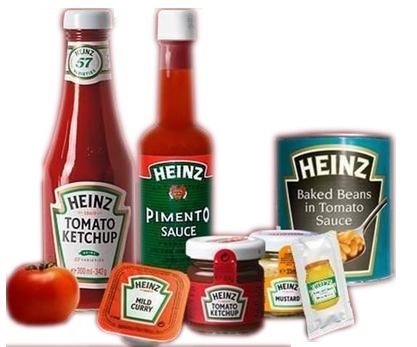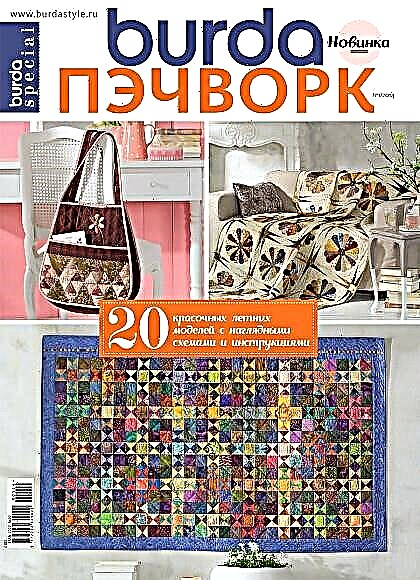Share
Pin
Tweet
Send
Share
Send
And absolutely accurate! Here you will read everything you need to know about our patterns and instructions.

A-D Pattern Sheets are in the middle of Burda magazine's sewing instructions.
Open the paper clips and remove the pattern sheets. Close the paper clips again.
All information about the pattern sheets
● In the instructions for each model, in a frame with a reduced drawing of the pattern details, the letter of the German alphabet indicates the pattern sheet on which the pattern of this model (AD) is located, the color of the pattern contour (red, blue, green or black) is indicated, the pattern part numbers are given, given sizes and configurations of the contours of the pattern for them.
● Part numbers of the pattern you need can be found in the margins of the pattern sheet, they have the same color as the outline of the pattern.
● Pattern details can be re-printed onto silk paper or otherwise: put yellow copy paper and a large sheet of paper under the pattern sheet, and then outline the details with the blunt end of the knitting needle.
● Transfer also all the inscriptions and check digits to the paper pattern. Compare the details of the reshaped pattern with the details of the reduced drawing of the pattern.
 ● The extra pink pattern is easy to find on the pattern sheet.
● The extra pink pattern is easy to find on the pattern sheet.Extra pattern can not be reshooted, but simply cut. But remember that in this case you cannot use the patterns drawn on this sheet for other models - they will be damaged.additional information
● All Burda patterns are given without allowances for seams and hem. We recommend allowances: for seams - 1-2 cm, for hemming - 2-5 cm.
● Fabric consumption is given taking into account the specifics of the recommended material. With a different width of the fabric, its consumption must be recounted. Depends on the pattern of the fabric, the details of the paper pattern are laid out in one direction or in different directions to save fabric.
● The layout of parts in the instructions shows the most rational way of arranging the details of the paper pattern on the original fabric. As a rule, the fabric is folded twice with the front side inward. The fold of the fabric is marked BEND, the longitudinal edges of the piece of fabric are marked EDGES. If the fabric is laid out in one layer, then face up.
● The details of the paper pattern that should be applied to the fabric with the top side (the side with the inscriptions on it!) Down are drawn on the layout plan with a dashed line.
● Parts and parts of parts shaded on the layout plan must be duplicated with a gasket.
● Transfer the contours of the pattern details using Burda carbon paper to the wrong side of the cut details. Marking lines, for example for a pocket or a line of the middle of the front, must be transferred to the front side of the details of the cut with stitch stitches.
Legend



From left to right:
EXTEND
Details that do not fit on the entire pattern sheet are completed by extending the lines from the end of the arrows by the specified amount.
CONNECTION LINE
Large details of the pattern, which cannot be extended in a straight line, are drawn on a sheet of patterns in two parts.Both parts of the part are transferred to paper separately and then glued along the connection line. The connection line is a double line. In addition, there are also alignment marks - small triangles whose vertices must coincide.
TAGS
Indicate how to connect and grind cut details. The same numbers must match.



From left to right:
COMBINATION LABELS
For long seams. Small cross stitches should match.
SCISSORS
Designation of the edges that are cut out without allowances, and notches, for example for pockets.
FOLDING LABEL
Lay the crease in the direction of the arrow.

CUT
Indicates the beginning / end of the section.

LABELS
Small cross marks on the sleeve and armhole of the shelf. They should coincide when attaching the sleeve. This is a guarantee of embedding the right sleeve in the right armhole and the left sleeve in the left armhole.
SYMBOLS
Seams and finishing stitches ►

Top left to right:
A loop
Button
Block
The labels below are given only in a reduced drawing of the details of the pattern and denote:
 Top down:
Top down:Squat ● Squat ● Pull
 BEND LINE
BEND LINEA dashed line drawn on the details of the reduced drawing of the details of the pattern, which, when cutting, should be combined with the fold of the fabric.

On the LAYOUT PLAN, a dashed line indicates the fold of a doubly folded fabric.
The article was prepared on the basis of the magazine “Sewing is easy” (1).
Share
Pin
Tweet
Send
Share
Send



